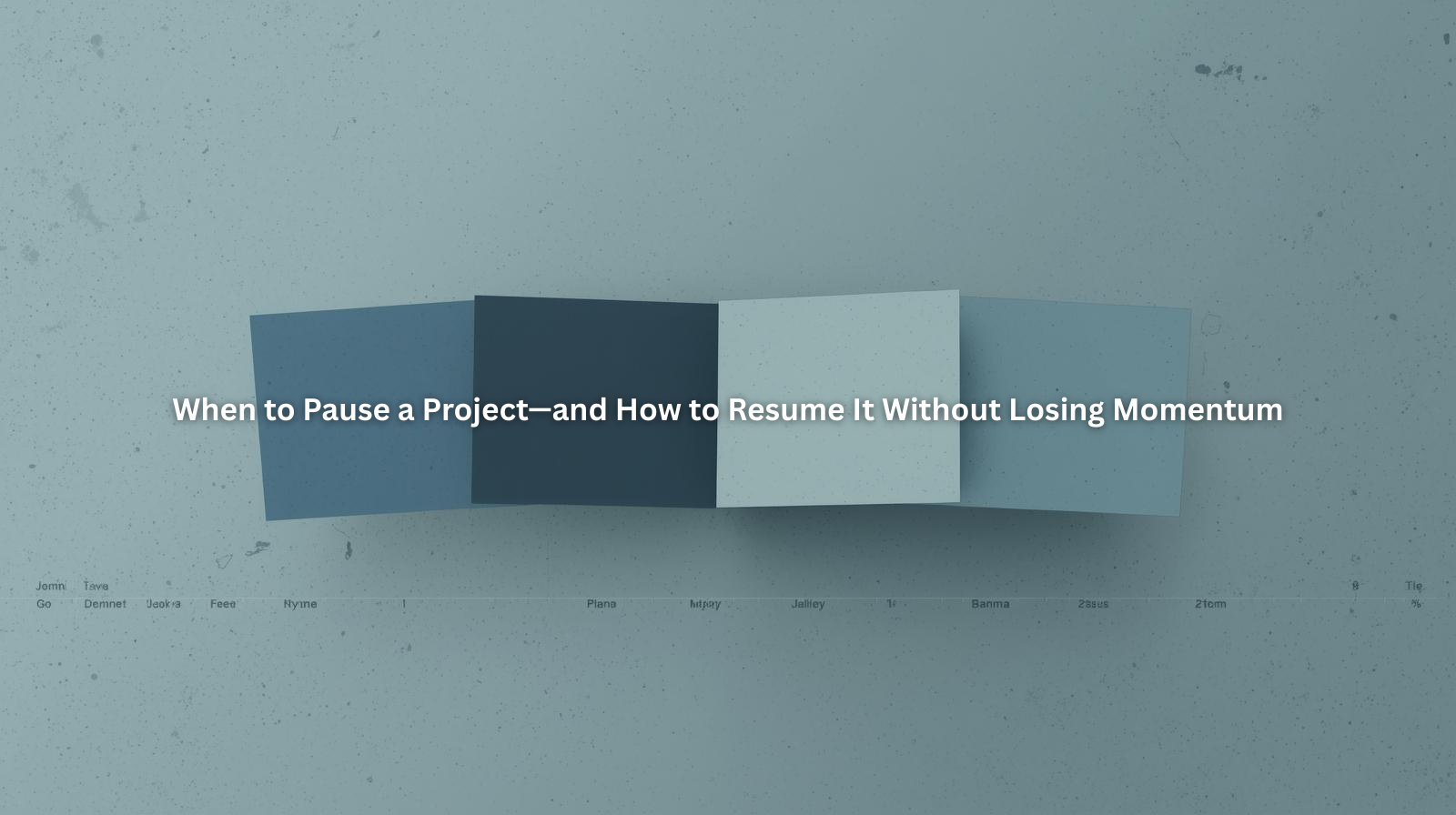How to Set Better Deadlines (and Actually Meet Them)

Table of Contents
- Why Most Deadlines Don’t Work
- Step 1: Set Realistic (Not Aspirational) Timelines
- Step 2: Break Projects Into Milestones
- Step 3: Pad for Real Life
- Step 4: Create Visibility and Accountability
- Step 5: Use a Deadline-Tracking System That Sticks
- Frequently Asked Questions (FAQ)
Why Most Deadlines Don’t Work
If you’ve ever stared at a calendar filled with big red deadlines—and still missed half of them—you’re not alone.
The problem isn’t that you’re lazy or disorganized. It’s that most deadlines are guesses, not strategies. We pick arbitrary dates, underestimate how long tasks take, and assume our future selves will be more focused and efficient.
But effective deadlines aren’t just about time. They’re about:
- Understanding how work flows
- Accounting for bottlenecks
- Planning for life’s inevitable interruptions
- Tracking progress with clarity
Whether you're managing multiple clients or just trying to stay on top of a solo project, setting better deadlines can be the difference between thriving and burning out.

Step 1: Set Realistic (Not Aspirational) Timelines
It’s tempting to commit to tight turnarounds—especially when you want to impress a client or hit a goal. But unrealistic deadlines create unnecessary pressure, which leads to rushed work, stress, and missed commitments.
To set a real timeline:
- Estimate based on your actual past project data, not wishful thinking.
- Account for how long each step will take, not just the total project.
- Ask: What’s the earliest I could complete this without skipping meals, sleep, or other priorities?
💡 If you’re using ProjectBook.co, you can look back at previous timelines to see how long similar projects actually took—and set smarter targets next time.
Step 2: Break Projects Into Milestones
A big deadline without structure is just a stress bomb. Instead of focusing on the final due date, work backward from the outcome, breaking your project into clear phases or milestones.
Let’s say you’re building a website. Your milestones might look like:
- Discovery & client questionnaire due
- Wireframes completed
- First draft of copy delivered
- Site development
- Final review & edits
- Launch
Each milestone should have:
- A deadline
- Owner (you, the client, a collaborator)
- Dependencies (what has to happen before this can start)
This structure gives you multiple check-ins and wins along the way—and gives clients confidence that the work is moving forward.
💡 In ProjectBook.co, every project can be mapped with milestones and sub-tasks. You’ll always know what’s next—and when it needs to be done.
Step 3: Pad for Real Life
Deadlines often fail because they don’t leave room for reality. Your creative energy will fluctuate. Clients will take longer to respond. Life will interrupt your perfectly time-blocked schedule.
So give yourself buffer time.
Try this:
- Add 10–20% padding to each milestone
- Plan for at least 1–2 business days of flex time before final delivery
- Block a “catch-up” day each week for spillover or admin work
Think of padding as a kindness to your future self. It protects your schedule and keeps your reputation intact when things get off track.
Step 4: Create Visibility and Accountability
A deadline you set and then forget is just a hope. To actually meet it, you need to keep it visible and ideally, shared.
What helps:
- Having a dashboard or task list that shows what’s due soon
- Setting automated reminders
- Sharing timelines with collaborators or clients to create soft accountability
- Doing a weekly review of upcoming deadlines and blockers
This isn’t about micromanaging yourself. It’s about staying connected to your workload so nothing sneaks up on you.
💡 With ProjectBook.co, every task and project is date-driven and visible from your dashboard, so you always know what’s next—without a separate calendar or post-it wall.
Step 5: Use a Deadline-Tracking System That Sticks
Managing deadlines in your head—or across scattered apps—almost guarantees things will fall through the cracks.
A good system will help you:
- Assign deadlines to tasks and subtasks
- Track progress toward project goals
- See all deadlines in one place (not buried in emails)
- Quickly adjust timelines when priorities shift
This is where ProjectBook.co shines: it’s built for freelancers and small teams who need structure without overwhelm. It’s easy to map your work, set realistic timelines, and make updates as things evolve.
No more scrambling, no more deadline dread.
Frequently Asked Questions (FAQ)
How do I know if my deadline is realistic?
Check your past projects. If similar work took two weeks, don’t promise it in three days. Always consider your current workload, client response times, and available working hours.
What should I do if I realize I can’t meet a deadline?
Let the client know as soon as possible, and offer a revised timeline. Be proactive, not reactive—it shows professionalism and helps preserve trust.
Should I share internal deadlines with clients?
Yes—especially for key milestones. It helps align expectations and encourages timely feedback.
How can I stay on top of multiple deadlines across clients?
Use a centralized project management tool like ProjectBook.co to track all your deadlines in one place and keep your workload visible.
How often should I update my deadlines?
Regularly! A weekly review is a great time to move, adjust, or confirm timelines based on how your week is going.
Final Thoughts: Better Deadlines Build a Better Business
Deadlines aren’t just dates—they’re agreements. When you set them with intention and manage them well, they create trust, flow, and space for your best work.
The next time you’re scoping a project, resist the urge to default to “ASAP.” Take a breath, build your timeline with care, and let your systems do the heavy lifting.
Ready to stop guessing your deadlines—and actually meet them?
Try ProjectBook.co today and organize your projects, milestones, and timelines with confidence.


